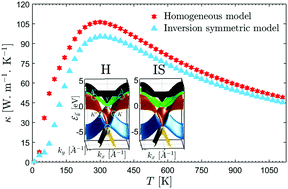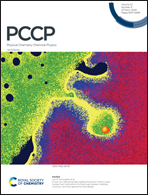On the in-plane electronic thermal conductivity of biased nanosheet β12-borophene
Abstract
The unique physical and chemical properties of β12-borophene stem from the coexistence of the Dirac and triplet fermions. The metallic phase of β12-borophene transitions to the semiconducting one when it is subjected to a perpendicular electric field or bias voltage. In this work, with the aid of a five-band tight-binding Hamiltonian, the Green's function approach and the Kubo–Greenwood formalism, the electronic thermal conductivity (ETC) of the semiconducting phase of β12-borophene is studied. Two homogeneous (H) and inversion symmetric (IS) models are considered depending on the interaction of the substrate and boron atoms. In addition, due to the anisotropic structure of β12-borophene, the swapping effect of bias poles is addressed. First of all, we find the pristine ETCIS < ETCH independent of the temperature. Furthermore, a decrease of 74.45% (80.62%) is observed for ETCH (ETCIS) when strong positive bias voltages are applied, while this is 25.2% (47.48%) when applying strong negative bias voltages. Moreover, the shoulder temperature of both models increases (fluctuates) with the positive (negative) bias voltage. Our numerical results pave the way for setting up future experimental thermoelectric devices in order to achieve the highest performance.



 Please wait while we load your content...
Please wait while we load your content...